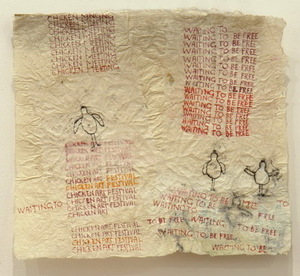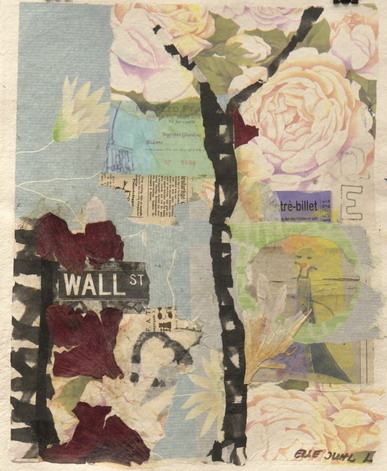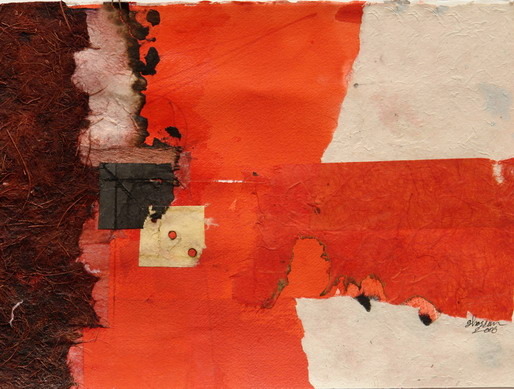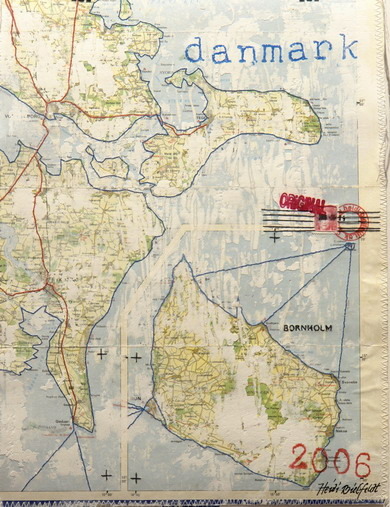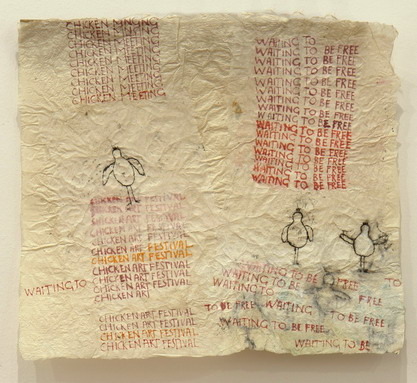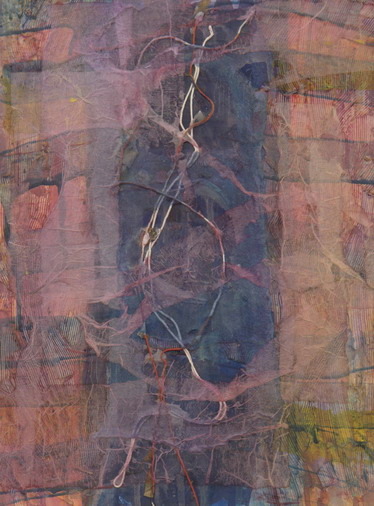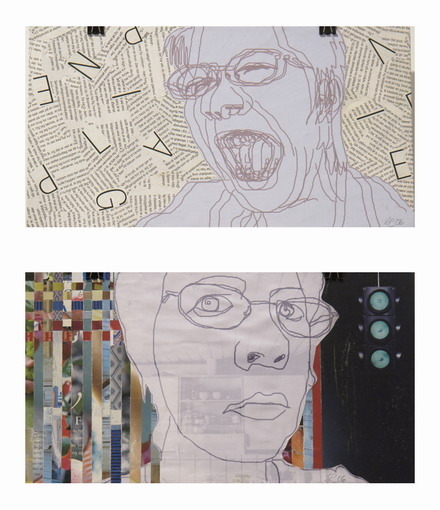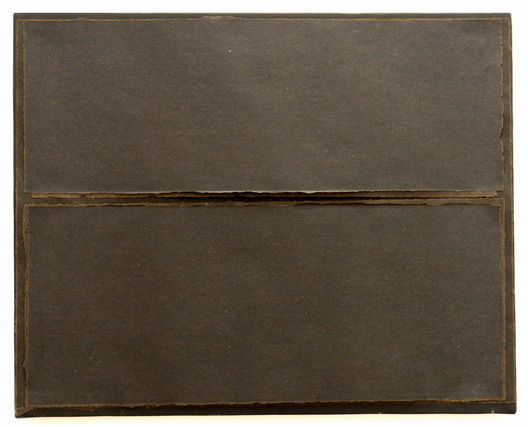STICKY THOUGHTS OF COLLAGE 0
(3rd international exhibition of collage at the Graphics Gallery “ER”) Kotryna Džilavjanaitė
www.kamane.lt, 2007 01 13
Cordula Kagemann
Else Juhl Lundhus
Ghassan Ghaib
Heidi Bielfeldt
Josephine Tabbert
Mari Yasuoka
Lis Rejndet Jensen
Ramūnas ČeponisPhotos by Egidijus Rudinskas
In brief: The international exhibition of collage organised in Vilnius for the third time (supervisor - Kęstutis Vasiliūnas) is presently exhibited in Kaunas at the Graphics Gallery. The smaller but the more valuable part of the exhibition, as it is stated, has been brought here. It consists of 60 rather small collage panels which split the walls of the gallery into multi-voiced diptychs. According to the requirements of the event, the artworks could not cross the three-dimensional space of assemblage.
Exhibitions dedicated to collage art are rare in the world, and the situation directly reflects the status of this art technique. Collage is considered to be an additional means of artistic expression rather than a separate field of art. Born in the first half of the 20th century, collage gradually became so usual and popular that its fame has faded out. Thus, what keeps collage alive today? Art spectators of the 21st century will hardly be astonished by technical aspects; therefore, creatively and originally of the “stuck” thoughts surprise one pleasantly.
Observing the exposition at the Graphics Gallery, an idea occurs that many participants (among whom there are only a few Lithuanians) simply joked and played with collage, and several works performed honestly and sensitively should shame authors who regarded the collage immaturely. It is evident that the authors are perfectly aware of the collage history but read its nature superficially. There is a number of artists in the exhibition who are sure that it is enough to stick papers brushed from the table together. Aesthetical borders are very wide in collage; however, professional artists should not look through fingers to the very process of decomposition and connection.
The majority of collages limit themselves with aesthetical values, they attempt to charm with abstract compositions, play of colours, they appeal to emotions rather than intellect. Only several authors succeed to stand out from the droning colourfulness of collages. In addition to industrial fragments artists use organic materials, object trouvé – found things from personal or historical space. They decorate collages with flower blossoms turning the works into sentimental herbariums (Else Juhl Lundhus, Denmark), fragments of cardboard boxes – a note about fragile parcels (Kęstutis Vasiliūnas), with old photographs, clocks, extracts from a note book which denote the past and lost time (Rimvydas Kepežinskas).
There are many fragments of written language in the exposition – notes, signs, paper clips. Artists leave the text illegible or arrange the meanings and mood of their artworks using the text. Katharina Pieper uses calligraphic decorative phrases in her lyrical works which render lightness and existential thoughts. Lis Rejndet Jensen (Denmark) arranges fragments of printed text which frame a futuristic screaming face of a woman. Inger Agnete Diemer (Denmark) imitates golden sheets illuminated with eastern inscriptions. In this way she reminds of the Middle age chroniclers who also worked in collage technique by writing down separate paragraphs from different resources and joining them into one unity.
Meanwhile, other authors declare an infantile relation with collage loading the conscience of a spectator with teddy-bears, children’s drawings and bright colours. The dose of childish primitivism my be justified only in the diptych of Josephine Tabbert (Germany), which was recognised the best artwork of the exhibition worthily. By drawing playful hens and funny notes on the soft and crumpled paper, the artist entwines a thread of absurdity inviting to a “chicken’s art festival”.
Ramūnas Čeponis also surprises by the fresher look to collage. Minimal cardboards of neutral colours open up with silent mouths, which calmly create a dissonance to the collage uproar of the exhibition. The diptych of purified expression proves that the persuasiveness of collage may be constructed not only by whirlpools of screaming shreds but also by restrained means.
Finally, even though the avant-garde of collage has already become a memory of the past, the technique still has some perspectives in the contemporary art. The exhibition testifies that collage is able to interest creators of various countries. It is important that Lithuania which organises such international exhibitions is becoming a kind of collage popularisation centre in Europe. Whether collage will gain the second life depends on the talent of creators and their professionalism now.








